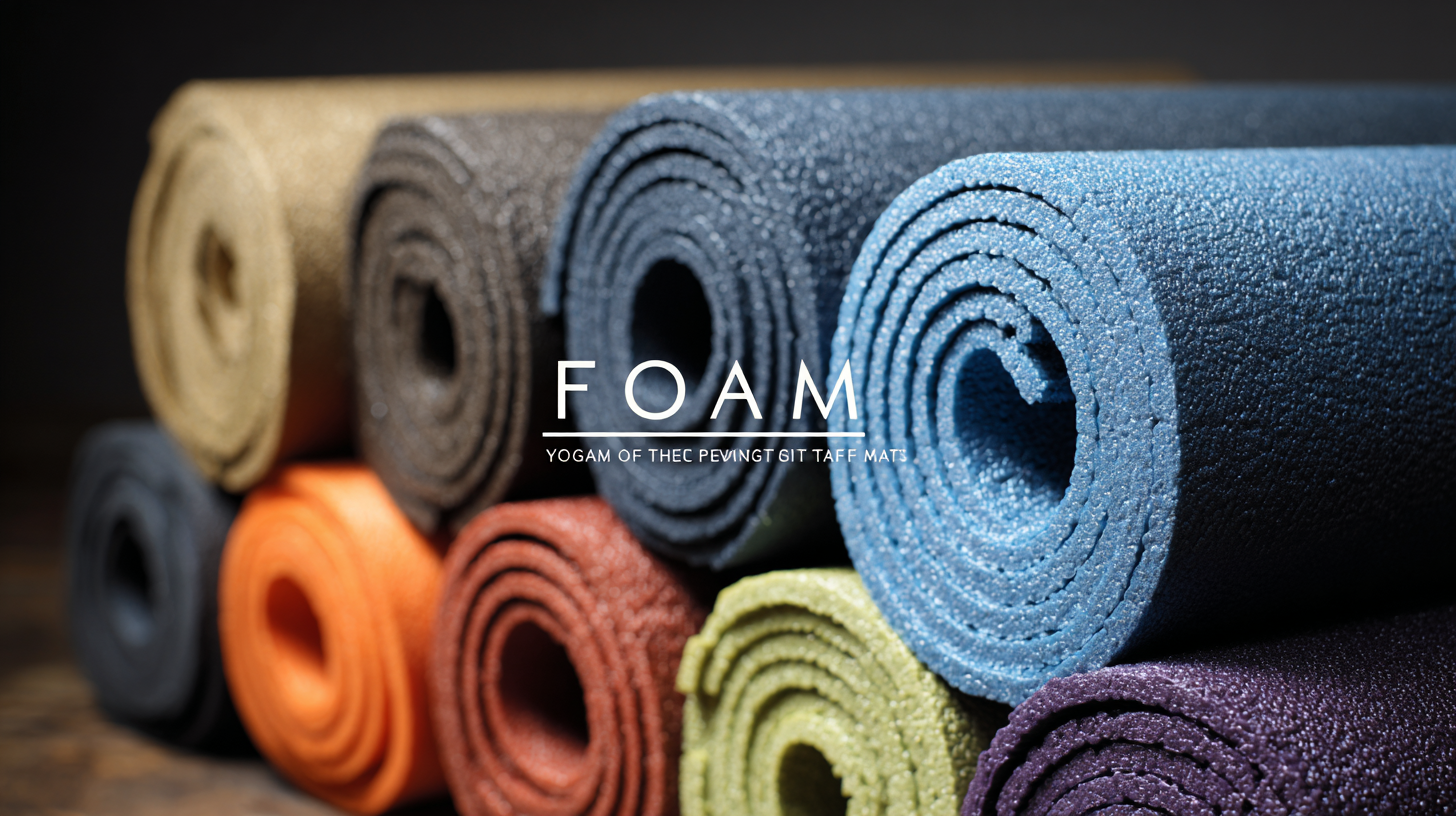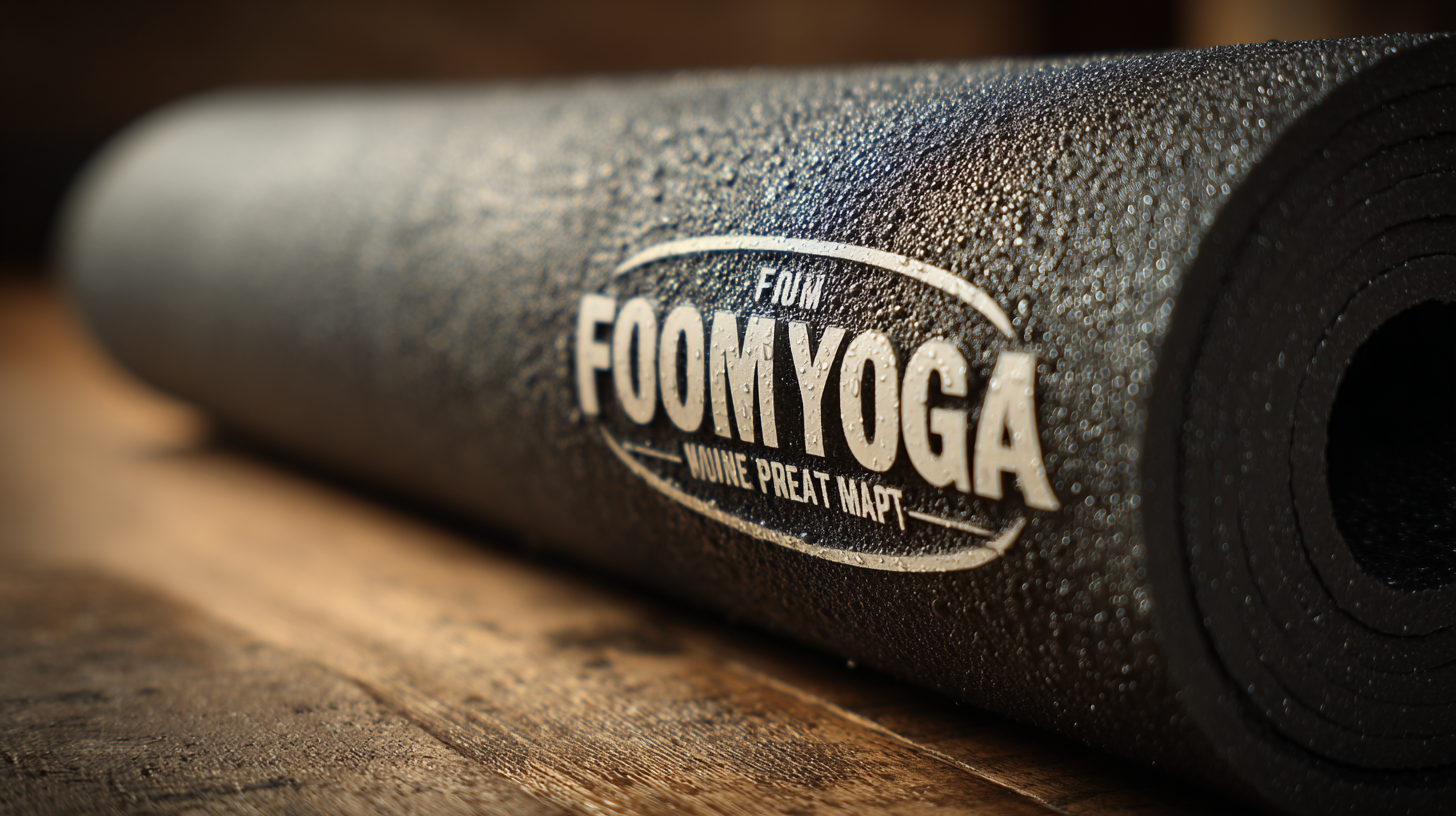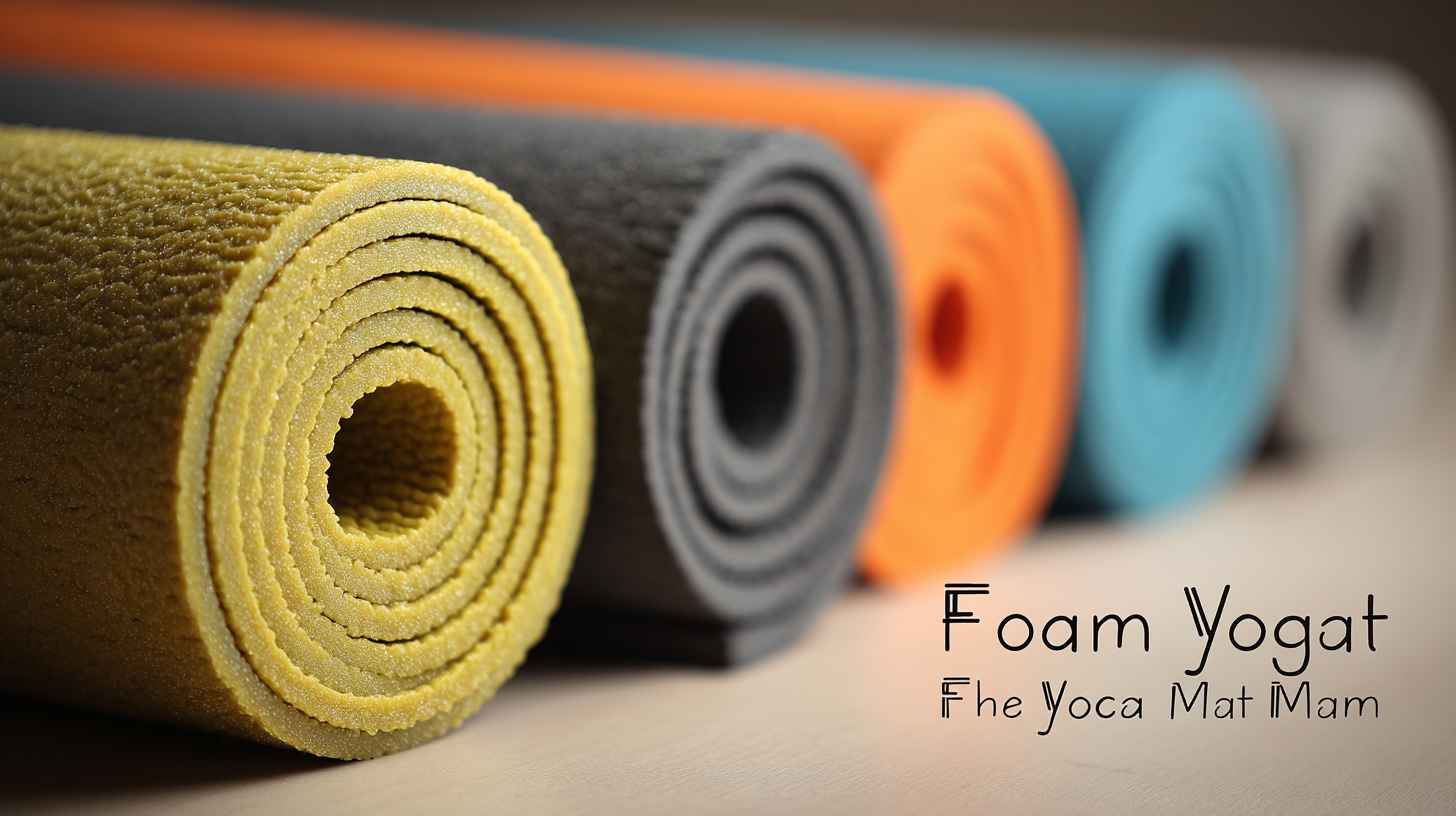 In the flourishing world of wellness and fitness, the Foam Yoga Mat has emerged as a staple for practitioners, reshaping not just how we approach yoga but also influencing our overall well-being. According to a report by IBISWorld, the yoga industry has experienced a remarkable growth rate, with participation rising by over 20% in recent years, leading to an increased demand for high-quality, durable mats tailored for various practices. However, despite their popularity, many consumers overlook the importance of proper care and maintenance of their Foam Yoga Mats, which can significantly extend their lifespan and optimize performance.
In the flourishing world of wellness and fitness, the Foam Yoga Mat has emerged as a staple for practitioners, reshaping not just how we approach yoga but also influencing our overall well-being. According to a report by IBISWorld, the yoga industry has experienced a remarkable growth rate, with participation rising by over 20% in recent years, leading to an increased demand for high-quality, durable mats tailored for various practices. However, despite their popularity, many consumers overlook the importance of proper care and maintenance of their Foam Yoga Mats, which can significantly extend their lifespan and optimize performance.
Understanding the specifications of these mats, coupled with effective care tips, not only enhances the user experience but also underscores the long-term benefits of investment in quality products. This blog aims to unlock the full potential of your practice by exploring the advantages of superior after-sales service, the cost of repairs, and valuable tips for sustaining your Foam Yoga Mat in peak condition.
When selecting the ideal foam yoga mat, understanding its key specifications is essential for ensuring a comfortable and effective practice. One of the most important factors is thickness. Foam yoga mats typically range from 4mm to 10mm in thickness, with thicker mats providing extra cushioning for joints during poses. For practitioners who practice on hard surfaces or have sensitive knees, a thicker mat can significantly enhance comfort and stability.
Another critical specification is the material used in the foam mat. High-density EVA or TPE foam are popular choices, offering a balance of durability, firmness, and grip. TPE mats are often considered eco-friendlier due to their recyclable nature, while EVA is known for its resistance to wear and tear. Additionally, look for mats that feature a non-slip surface to maintain traction during dynamic movements, as this can prevent injuries and enhance your overall experience. With the right specifications in mind, you can unlock your practice and elevate your yoga journey.

When choosing a foam yoga mat, considering the right density and thickness is crucial for both comfort and support. A mat that is too thin may lead to discomfort during poses, especially those that require kneeling or lying down. For general practice, a mat thickness of around 4 to 6 mm is often recommended, striking a balance between cushioning and stability.

Tip: If your practice involves a lot of standing poses, opt for a mat with higher density to provide more support without compromising grip. A high-density foam mat can absorb impact, making it easier to hold poses for longer periods.
Another factor to consider is the firmness of the mat. A softer mat feels great but may not offer the stability needed during challenging asanas. Conversely, a firmer mat enhances balance, allowing you to deepen your practice.
Tip: Test a few mats in-person if possible. Roll out a few options in your preferred studio setting to gauge how different densities and thicknesses feel underfoot. This ensures you choose the best mat for your unique practice style and personal comfort.
When investing in a foam yoga mat, understanding how to properly care for it is essential to prolong its lifespan and maintain its quality. According to a recent survey by the Yoga Alliance, a staggering 86% of yoga practitioners use mats that can last up to 5 years with the right care. Here are some essential tips to extend the life of your foam yoga mat.
Firstly, always clean your mat after each use. A simple mixture of warm water and mild soap can effectively remove sweat and bacteria without damaging the foam. Avoid harsh chemicals, as they can degrade the material over time. Simply wipe down your mat with this solution and let it air dry completely before storing it away.
Secondly, store your yoga mat in a cool, dry place away from direct sunlight. UV rays can cause the foam to break down prematurely. When rolling up your mat for storage, make sure to keep it loosely rolled to avoid creasing which can lead to wear and tear. By implementing these care tips, you can greatly enhance the longevity and performance of your foam yoga mat, ensuring it supports your practice for years to come.
This chart shows the ratings for key characteristics of foam yoga mats. A score of 10 represents the best quality. Proper care can enhance these ratings by extending the life and performance of your yoga mat.
When it comes to choosing the perfect foam yoga mat, understanding the pros and cons specific to various yoga styles is essential. For practitioners of restorative or therapeutic yoga, foam mats offer excellent cushioning and support, enhancing comfort during long-held poses. The soft surface allows for gentle movements and can be particularly beneficial for those with joint issues. However, these mats may lack the necessary grip for styles like vinyasa or power yoga, where stability and traction are paramount.
On the other hand, while foam mats can be advantageous for lower-intensity practices, yogis engaging in more dynamic sequences might find them limiting. The spongy texture can lead to slips and instability, interfering with balance-focused postures. For practitioners seeking a mat that caters to a variety of styles, considering a dual-layer design might offer a solution—providing the cushiness of foam along with a firmer surface for better grip during active sessions. Ultimately, knowing your practice type and personal preferences will guide you in selecting a foam mat that best supports your journey.
When it comes to choosing a foam yoga mat, eco-friendly options are becoming increasingly popular among environmentally-conscious practitioners. Sustainable materials not only reduce your carbon footprint but also enhance your overall yoga experience. Look for mats made from natural rubber, recycled materials, or other biodegradable options that are free from harmful chemicals. These mats provide excellent traction and support, ensuring a safe and comfortable practice while aligning with your values of sustainability.
Choosing a foam yoga mat that prioritizes the environment doesn't mean sacrificing quality. Many brands are innovating by creating durable, high-performance mats that are also gentle on the planet. Brands that focus on sustainability often employ ethical manufacturing practices, ensuring that their products are made in a way that benefits both the worker and the environment. By selecting eco-friendly mats, you contribute to a larger movement towards healthy living and preservation of our natural resources, allowing you to practice yoga with a clear conscience.
